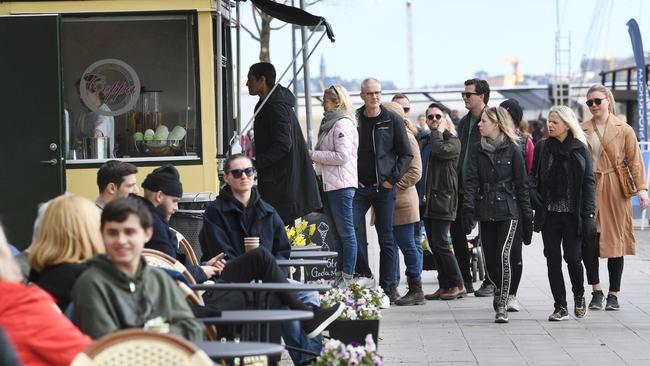Coronavirus: Free-to-roam Swedes ‘flatten curve’
Medic leading Sweden’s virus response claims the country’s epidemic is stabilising despite shops, schools, bars staying open.

The medic leading Sweden’s coronavirus response claims the country’s epidemic is stabilising even though the population has not been ordered to stay at home.
Almost alone among wealthy European nations, the Swedish authorities have chosen not to slow the disease’s spread through an enforced lockdown.
Instead, most schools, bars, restaurants, shops and even some museums and galleries have remained open, with Swedes advised rather than compelled to adopt social distancing measures.
This distinctive strategy has been criticised by a large number of scientists as the coronavirus death toll has risen to 1,540, leaving the country with a per capita fatality rate double Denmark’s and more than quadruple Norway’s.
Yet Anders Tegnell, the chief epidemiologist, said the curve was beginning to flatten and had reached a “plateau” in many parts of the country, including Stockholm, the centre of the largest outbreak. The number of daily new COVID-19 infections reached a peak of 726 on April 8 before falling to 332 four days later. Since then it has inched back up to about 600 new cases a day.
Dr Tegnell said there was a “clear plateau position” in most districts. “The pressure on the intensive care units appears to be light,” he told the broadcaster TV4 over the weekend. “We hope this is a trend that will continue.”
His deputy, Anders Wallensten, struck a similar tone of guarded optimism. “We still see that it is levelling off a little,” he said. “That’s hopeful. But this is a hard time and a lot of people are getting ill … so the danger is absolutely not over.”
Dr Tegnell suggested last week that Stockholm could achieve herd immunity, where a large enough majority of the population have recovered from the disease that the virus has little room to spread, within weeks. Most scientists estimate that this requires at least 60 per cent of people to become infected.
Sweden is widely regarded as an outlier in its response, although ministers have repeatedly played down the idea that it is pursuing a laissez-faire course that differs radically from those of its neighbours.
Both critics and advocates of lockdowns have found ammunition in the Swedish experience. On the one hand, there is some early evidence that the government may have spared the economy some of the damage inflicted by stricter shutdowns in other countries.
By the start of April less than 6 per cent of its workforce had filed claims for unemployment benefits, compared with more than 14 per cent in Norway.
Forecasters predict that Sweden’s GDP will decline by about 6 per cent between the start of April and the end of June, while Germany’s is expected to fall by nearly 10 per cent and Britain’s by as much as 35 per cent.
On the other hand, Sweden has been much harder hit by COVID-19 than any other Nordic country. Adjusted for population size, Sweden’s coronavirus death rate is nearly six times as high as Finland’s. It has also had more patients in intensive care than the three other Scandinavian states put together.
The Times





To join the conversation, please log in. Don't have an account? Register
Join the conversation, you are commenting as Logout